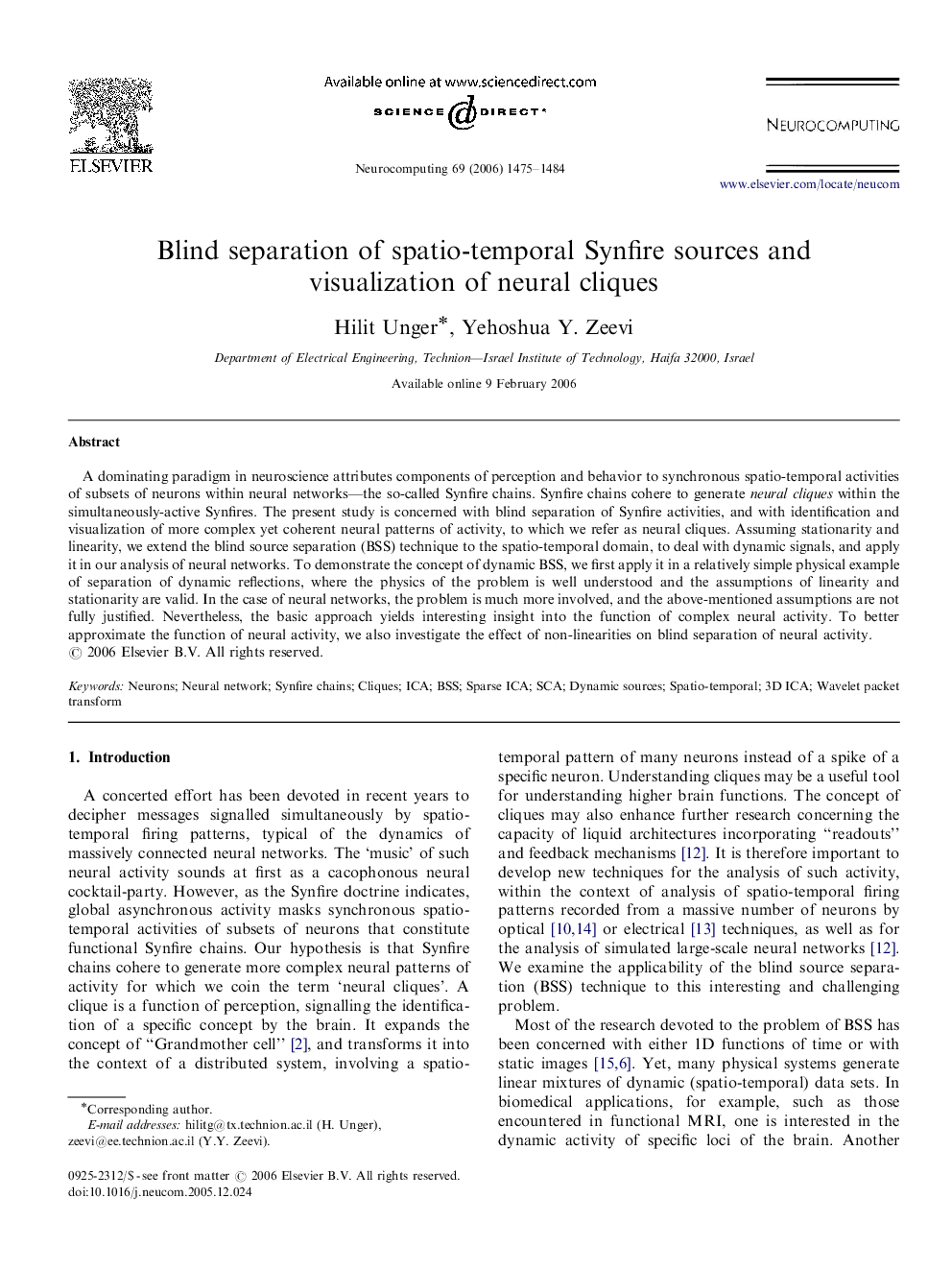| کد مقاله | کد نشریه | سال انتشار | مقاله انگلیسی | نسخه تمام متن |
|---|---|---|---|---|
| 409419 | 679072 | 2006 | 10 صفحه PDF | دانلود رایگان |

A dominating paradigm in neuroscience attributes components of perception and behavior to synchronous spatio-temporal activities of subsets of neurons within neural networks—the so-called Synfire chains. Synfire chains cohere to generate neural cliques within the simultaneously-active Synfires. The present study is concerned with blind separation of Synfire activities, and with identification and visualization of more complex yet coherent neural patterns of activity, to which we refer as neural cliques. Assuming stationarity and linearity, we extend the blind source separation (BSS) technique to the spatio-temporal domain, to deal with dynamic signals, and apply it in our analysis of neural networks. To demonstrate the concept of dynamic BSS, we first apply it in a relatively simple physical example of separation of dynamic reflections, where the physics of the problem is well understood and the assumptions of linearity and stationarity are valid. In the case of neural networks, the problem is much more involved, and the above-mentioned assumptions are not fully justified. Nevertheless, the basic approach yields interesting insight into the function of complex neural activity. To better approximate the function of neural activity, we also investigate the effect of non-linearities on blind separation of neural activity.
Journal: Neurocomputing - Volume 69, Issues 13–15, August 2006, Pages 1475–1484